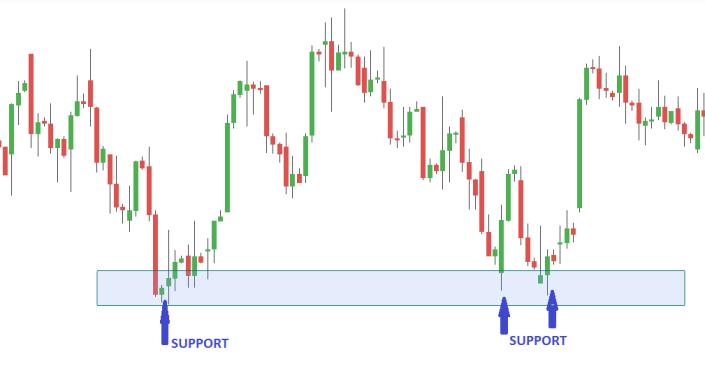🚨 Support and resistance are key concepts in the stock market, and understanding how they work can help you make informed decisions about your investments. #Support #Resistance
1. Support refers to a level at which the price of a stock tends to find difficulty falling below. This is because buyers tend to step in and purchase the stock at this level, providing support and preventing the price from falling further. 

2. On the other hand, resistance refers to a level at which the price of a stock tends to find difficulty rising above. This is because sellers tend to step in and sell their stock at this level, providing resistance and preventing the price from rising further. 

3. Support and resistance levels can be identified through technical analysis, which involves studying historical price patterns and trends. These levels can then be used to make informed decisions about when to buy or sell a stock. 

4. If a stock is approaching a support level, it may be a good time to buy, as the likelihood of the price falling further is reduced. Similarly, if a stock is approaching a resistance level, it may be a good time to sell, as the likelihood of the price rising further is reduced 

In conclusion, understanding and identifying support and resistance levels can be a powerful tool for making informed trading decisions.
@threadreaderapp Unroll please
• • •
Missing some Tweet in this thread? You can try to
force a refresh















